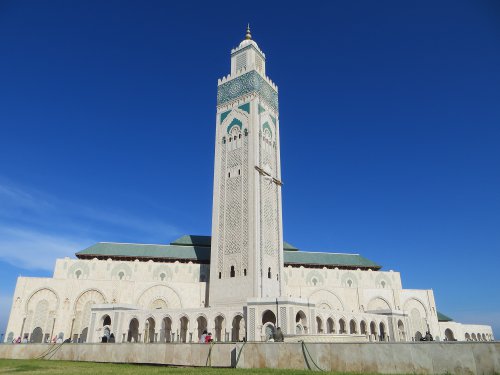Sights and Activities
Below are the places we saw and activities completed while visiting Morocco:
Chefchaouen
Plaza Uta el-Hamman: located in the heart of the medina is this shady, cobbled main city plaza that is surrounded by restaurants and the Kasbah.
Raz el-Maa Waterfall: not too far from the medina flows a river with a peaceful, cascading waterfall. We walked along the river with its beautiful landscape setting with locals washing clothes.
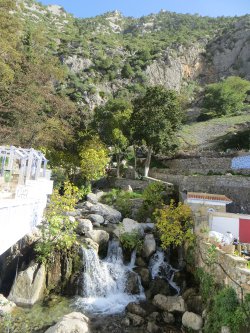

WWOOF Olive Farm: we had coordinated to volunteer in an olive farm, but unfortunately we had to cancel our visit in order to recuperate from our sickness (scabies) we discovered we had in Spain. We were still able to visit the farm one afternoon, help harvest olives, and walked around the large property.
Kasbah: the main plaza is dominated by the red walls of the Kasbah, or the medina’s citadel. The walled fortress contains a lovely garden, a small ethnographic museum, and from the tower boasts great views of the city.
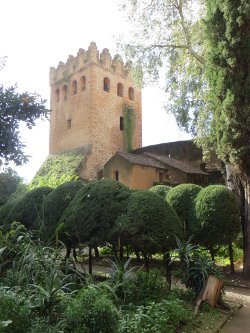
Moulay Idriss Zerhoun
In Fez, we were hosted, through CouchSurfing, by Rachid. He offered to take us to the village where he grew up, Moulay Idriss Zerhoun. We spent a magnificent culturally filled day with his four brothers, mother, and father. His mother invited us to a delicious home cooked meal, had funny and interesting conversations with them, and walked around the village. CouchSurfing continues to reward us with magnificent cultural experiences and has proven, by far, to be the best pre-trip decision.

Fez
Dar el-Makhzen: The Royal Palace and its grounds are not open to the public, but the main entrance gates, Dar el-Makhzen, is a stunning example of modern restoration. The palace is located in the ‘new’ district of the city, although the district is 700 years old!
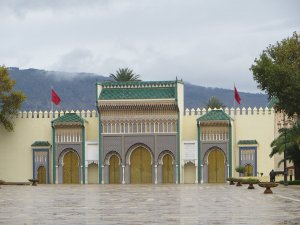

Jewish Synagogue: in the 14th century, the district of Fèz el-Jdid was a refuge for Jews, thus creating a mellah (Jewish quarter). The mellah is home to this synagogue and from the terrace we could see the Jewish cemetery
Medina: almost every Moroccan city contains a walled old city, or medina, and Fez’s medina was definitely our favorite. Within the old walls lies an incredible maze of twisting alleys, blind turns, and hidden souqs (markets). Navigation was at times confusing and getting lost was part of charm: you never know what discovery lies around the next corner.
Medersa Bou Inania: this 14th-century Islamic College is the city’s finest theological colleges constructed by the Merenid dynasty. The zellij (tiling), muqarnas (plasterwork), and woodcarving are amazing.

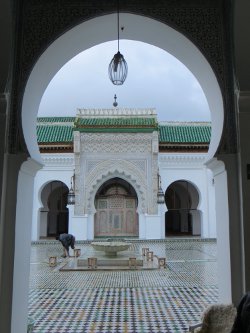
Kairaouine Mosque: Fez is considered Morocco’s spiritual capital and this mosque would be the true heart. Built in 859 by refugees from Tunisia and then rebuilt in the 12th century, it can accommodate up to 20,000 people at prayer and is Africa’s largest mosque. We unfortunately were only able to get a glimpse of its beauty from the outside, since non-Muslims are forbidden to enter.
Tanneries: we were able to get a peek through a doorway at the same level where all the leather tanning takes place, but most of the action was better viewed at a bird’s eye view on a terrace located above. The smell and movement was impressive: men hauling loads of leather pieces, many tanks of colored dies, and the odor cows!
Merenid Tombs: the tombs, located north of the medina, are in a state of ruin but still impressive. The best part of the visit is the spectacular views over Fez.
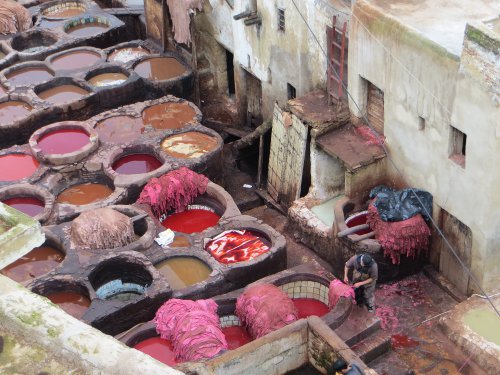
Marrakesh
Musee de Marrakech: inaugurated in 1997, this museum is housed in a beautifully restored 19th-century palace, Dar Mnebhi. There were many art exhibitions and the palace patios were simply stunning.
Ali ben Youssef Medersa: this peaceful palace has stunning stucco decoration and many rooms.
Djemaa el-Fna: a huge square in the medina and internationally known for having one of the world’s greatest spectacles. We visited the square during the day when the action is relatively tame, but at dusk is when the curtain goes up on rows of open-air food stalls, jugglers, storytellers, snake charmers, musicians, acrobats, and lunatics! We spent a few hours on a terrace admiring the spectacle.
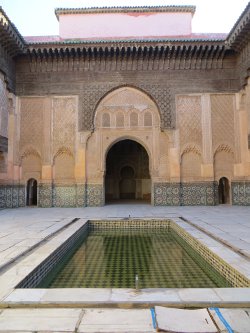
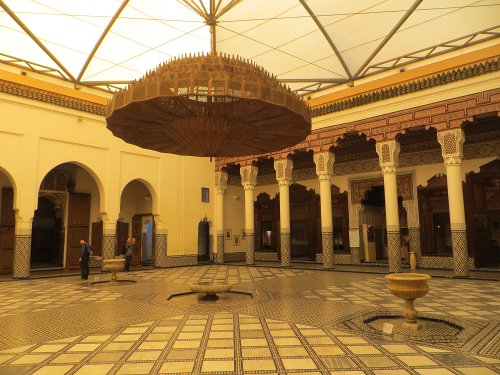

Snake Enchanter in Djemaa el-Fna
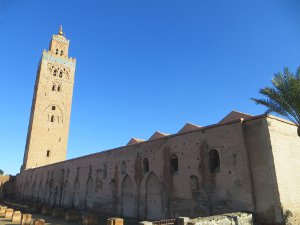
Koutoubia Mosque: Marrakesh’s most famous mosque is this 12th century Moroccan-Andalusian architecture. The 70m-tall minaret dominates the landscape and visible for miles in all directions.
Saadian Tombs: home to beautifully decorative tombs that are the resting places of Saadian princes.
Palais el-Badi: the most famous city palace, the ‘Incomparable’, once reputed to be one of the most beautiful palaces in the world. Now in ruins, all that is left are the towering walls and the staggering scale to give an impression of the former splendor.
Palais de la Bahia: the ‘Brilliant’, is another city palace with beautiful ceilings and floors.
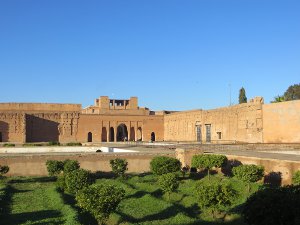
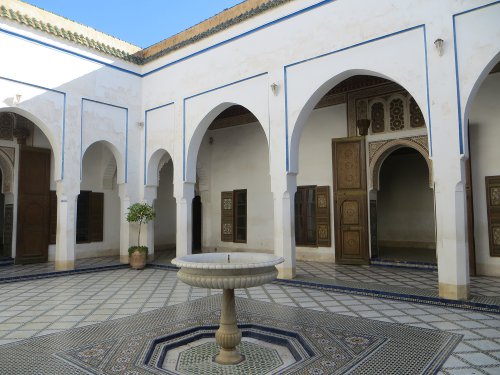
M’Hamid
We spent very little time, a couple hours, in the village, but this is where we organized our great adventure into the Saharan dunes. We rode on a four-wheel-drive 56km away passing by different desert terrain to spend a couple days in the 40km stretch of golden sand dunes known as Erg Chigaga and two magnificent nights under the jaw-dropping starlit sky. We spent our time lying around, riding camels, trying to sandboard, watching the sunsets, and listening to local music under the stars. Be sure to check out our article to read more about this majestic adventure.
Rabat
Kasbah: sitting high up on a hill, the walled fortress is now full of residences intertwined with small streets and great Atlantic Ocean and River Bou Regreg views. The southern corner is home to the Andalusian Gardens, laid out by the French during the colonial period.
Musee des Oudaia: located inside the Andalusian Gardens is this grand 17th century palace that contains a museum of jewelry and other royal artefacts.
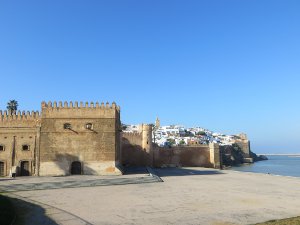


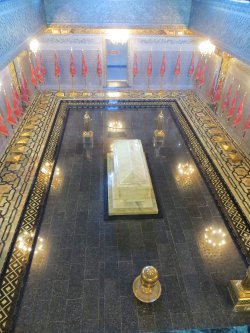
Le Tour Hassan – Minaret: this tower is Rabat’s most famous landmark, built in 1195 by the Almohad dynasty sultan, Yacoub al-Mansour, intending to make it the highest in the Islamic world, but he died before the project was completed. At 44m, the carved tower soars over the remains of the adjacent mosque.
Mausoleum of Mohammed V: the marble mausoleum, built in traditional Moroccan style, is where the present king’s father (Hassan II) and grandfather (Mohammed V) are laid to rest here.
Chellah / Sala Colonia – Ruins: this combined ancient Roman city of Sala Colonia and later the necropolis of the Merenid dynasty of Chellah is now in ruins taken over by a colony of storks.

Casablanca
Hassan II Mosque: the world’s third-largest mosque was built to commemorate the former king’s 60th birthday. The building can hold up to 25,000 worshippers and can accommodate a further 80,000 in the courtyards and squares around it.
